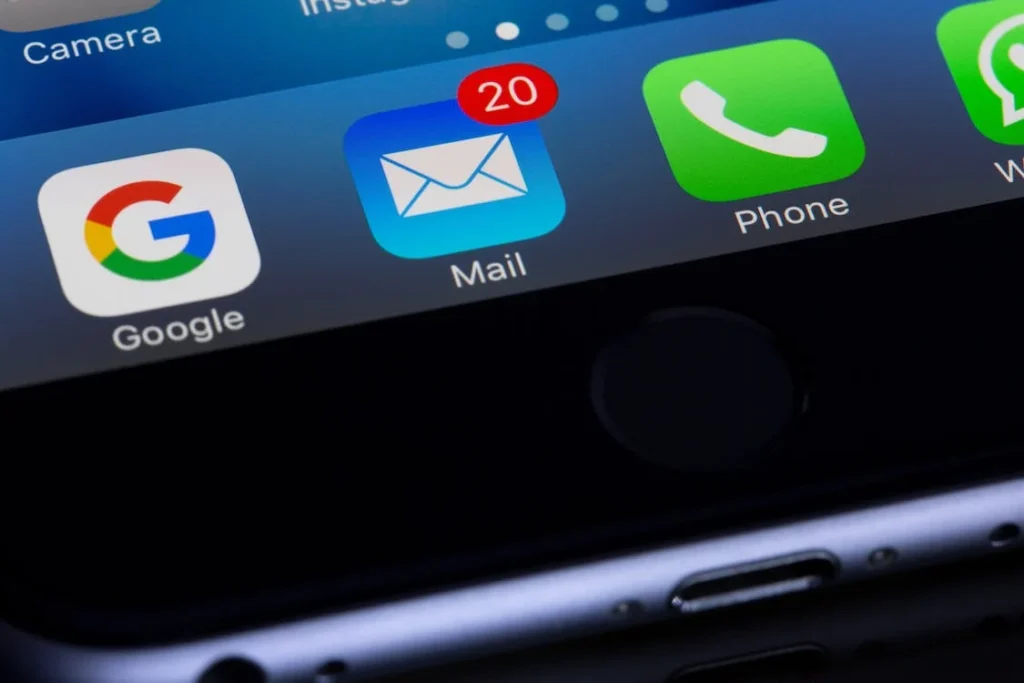In the ever-expanding universe of online education, email marketing emerges as the guiding star for connecting knowledge seekers with the courses that can propel them forward. It’s not just about casting a wide net but about casting it wisely, ensuring that each message you send out lands in the right inboxes and ignites a spark of curiosity and motivation. In this in-depth guide, we’ll navigate the strategies and tactics necessary for leveraging email marketing to boost enrollments and engagement for your online courses. From understanding the unique needs of digital learners to crafting emails that resonate and motivate, we’ll cover the A to Z of creating an email marketing campaign that translates into real-world success.
Identifying Your Audience: The Cornerstone of Effective Email Campaigns
In the digital classroom of email marketing, understanding who sits behind the screens is paramount. The more precisely you can identify your audience, the more effectively you can tailor your communication to meet their learning aspirations.
Segmenting Your Learners
Begin by segmenting your audience based on their interests, learning goals, and behavior. Just as different students enroll in different courses, your subscribers will have diverse interests. Categorize them into segments such as professional development seekers, hobbyists, or academic learners. This targeted approach allows for more personalized and relevant email content that speaks to each learner’s needs.
Analyzing Learner Behavior
Track how subscribers interact with your previous emails and website. Which courses do they browse? What content do they linger on? This behavior offers insights into their preferences and how they like to learn, whether through video tutorials, interactive sessions, or reading materials. Use this data to send targeted emails that align with their demonstrated interests and behaviors.
Understanding Demographics
Demographics such as age, location, and education level can also inform your email marketing approach. For instance, younger audiences may prefer more visually dynamic content and a casual tone, while professionals might appreciate detailed course outlines and evidence of ROI for their learning.
Crafting Compelling Email Content for Online Courses
To turn prospects into students, the content of your emails must be as compelling as the courses you offer. It should educate, entice, and inspire action.
Highlighting the Value of Your Courses
Your email content should communicate the value proposition of your courses clearly. Explain how the course can solve problems, advance careers, or enrich personal lives. For instance, if you’re offering a coding course, emphasize how this skill can open up a plethora of job opportunities in the thriving tech industry.
Storytelling to Connect and Convert
Stories resonate with everyone. Share success stories of past students who have benefited from your courses. These narratives can make the learning experience more tangible and relatable, encouraging new students to enroll by showcasing the transformative potential of your offerings.
Engaging Visuals and Media
Incorporate engaging visuals and multimedia elements into your emails. Use images or videos of course materials, instructor introductions, and student testimonials to create a richer picture of what learners can expect. Visuals can break up text-heavy content and make the information more digestible and engaging.
Clear Calls-to-Action
Every email should have a clear call-to-action (CTA) that guides readers on what to do next. Whether it’s “Enroll Now,” “Download the Course Brochure,” or “Watch a Free Lesson,” make sure your CTAs are prominent and straightforward. They should stand out visually and be easy to find in the email layout.
Optimizing Email Campaigns for Conversion
The ultimate goal of your email marketing efforts is to convert subscribers into active participants in your online courses. To achieve this, every element of your email campaign must be fine-tuned for maximum conversion potential.
Personalization at Scale
Utilize the power of personalization to make each recipient feel that your message is crafted just for them. Use their name, reference their past course interests, or suggest courses based on their browsing history. For example, if a subscriber has previously shown interest in a beginner’s photography course, you might personalize the email to recommend an advanced-level course.
Creating Urgency and Scarcity
Incorporate elements of urgency and scarcity into your email campaigns to encourage quick action. Limited-time offers, bonus course materials for early sign-ups, or exclusive access to live Q&A sessions with instructors can motivate subscribers to enroll sooner rather than later.
Streamlining the Enrollment Process
The path from the email to course enrollment should be as seamless as possible. Ensure that the links in your CTAs lead directly to a simple and straightforward enrollment page. The fewer the clicks and the simpler the process, the higher the likelihood of conversion.
A/B Testing for Optimized Results
Implement A/B testing to find the most effective email elements. Test different subject lines, images, body copy, and CTAs to see which combinations yield the best results. By continually refining your approach based on solid data, you’ll improve the conversion rate of your campaigns over time.
Nurturing Leads: Keeping Prospective Students Engaged
Lead nurturing is a delicate process that involves maintaining a relationship with potential students until they are ready to take the leap. It’s about consistent, value-driven communication that builds trust over time.
Educational Content that Adds Value
Provide your subscribers with ongoing value to keep them engaged. Send them educational content that positions your brand as an authority and showcases your expertise. This could be in the form of blog posts, industry news, tips and tricks, or free mini-courses that give them a taste of what your full courses offer.
Follow-Up Sequences Post-Interaction
After a subscriber interacts with your content—be it by downloading a course syllabus, attending a webinar, or starting a course trial—trigger a follow-up email sequence that gradually guides them towards enrollment. This sequence can address common questions, offer additional resources, or share stories of student successes to reinforce the decision to enroll.
Regular Check-Ins and Surveys
Regularly check in with your leads through email. Ask for feedback on the content they’ve received, inquire about their learning goals, or simply offer assistance in choosing the right course. Surveys can be particularly effective in gauging interest levels and understanding the obstacles that prevent them from enrolling.
Leveraging Social Proof
Social proof is powerful in nurturing leads. Include testimonials, reviews, and user-generated content in your emails to show prospective students the community they’ll be joining. Knowing that others have successfully learned and benefited from your courses can be a strong motivator for undecided leads.

Related: Check out our free SEO suite

Re-Engaging Past Students: Email Strategies for Continued Learning
Alumni of your courses are not just past students; they’re potential advocates and repeat learners. Keeping them engaged is crucial for fostering a community of continuous learning and growth.
Alumni Spotlights and Success Stories
Celebrate your alumni by featuring their successes in your emails. Spotlight stories can inspire current and potential students, showcasing the real-world benefits of your courses. For instance, an email highlighting a past student’s career progression after course completion can motivate others to pursue further education.
Advanced Courses and Learning Pathways
For past students, recommend advanced courses or learning pathways that build on what they have already learned. Personalize these recommendations based on the courses they’ve completed, and highlight how continued learning can help them achieve their personal and professional goals.
Exclusive Offers for Course Alumni
Show appreciation to your course alumni by providing them with exclusive offers. This could be discounts on future courses, early access to new content, or special membership perks. These offers not only incentivize re-engagement but also reinforce the value of staying connected with your brand.
Re-engagement Campaigns
Create targeted re-engagement campaigns for students who haven’t interacted with your emails or platform for a while. A re-engagement email might include a poll asking why they haven’t returned or offer assistance if they’re encountering obstacles to continuing their education.
Creating a Community: Interactive Emails for Student Connection
Beyond individual enrollments and course completions, there’s a powerful dynamic that thrives within educational communities. Email marketing can be a tool not just for information, but for connection, transforming individual learners into a united community.
Interactive Newsletters with Student Contributions
Foster a sense of belonging by inviting students to contribute to your newsletters. This could be in the form of sharing their projects, providing tips, or even writing guest posts. Such interactive newsletters not only engage readers but also make them feel like an integral part of the learning community.
Student Discussion Forums and Groups
Use emails to promote and facilitate student discussion forums or social media groups. Encourage students to join and participate in discussions related to their courses. Highlighting these community spaces in your emails reminds students that they are part of a larger network of peers.
Live Events and Webinar Invitations
Organize live events, such as webinars or Q&A sessions with instructors, and use email to invite students to these events. These live interactions can strengthen the community feeling and offer additional value to your subscribers.
Gamification and Challenges
Introduce elements of gamification through your emails by setting up challenges, quizzes, or competitions with rewards such as course discounts or free access to premium content. This not only makes learning fun but also encourages interaction among students.
Utilizing Automation for Personalized Learning Journeys
Automation in email marketing is like having a virtual teaching assistant; it ensures that each student receives timely, relevant, and personalized communication that enhances their learning experience.
Welcome Sequences for New Students
Kick off the educational journey with automated welcome email sequences. As soon as a student enrolls in a course, trigger a series of emails that guide them through the initial steps. These emails can introduce the course platform, provide a course roadmap, and offer resources to help them get started. For instance, an automated email could provide a checklist of preparatory tasks before the course begins, helping students feel prepared and connected from day one.
Progress Check-Ins and Encouragement
Automate check-in emails that correspond with the course’s progress. These emails can offer encouragement, celebrate milestones, or offer help if the student seems to be lagging. A mid-course automated email could congratulate students on reaching the halfway point and provide motivational tips to maintain momentum.
Course Completion and Feedback Requests
Once a student completes a course, automated emails can thank them for their participation, offer a certificate of completion, and request feedback on their experience. These emails not only provide closure but also open the door for further engagement and improvement based on their feedback.
Personalized Recommendations for Continued Learning
After course completion, use automation to send personalized course recommendations based on the student’s learning history. If a student has just finished a beginner’s course in digital marketing, an automated email could suggest an intermediate course or a specialization in a related area, such as social media marketing.
Conclusion
We’ve whisked through a menu of strategies, each designed to enhance the email marketing efforts for online courses. From the appetizer of understanding your audience’s palate to the dessert of leveraging data-driven insights, every course in this guide has been prepared to help you boost enrollments and foster enduring engagement.
READ NEXT:
- Content Marketing in Crisis Situations: Navigating Challenges with Sensitivity
- How First Resonance Can Boost their Website Traffic to 10k in 3 Months! (Our Take!)
- Branding for the Health and Wellness Industry: Inspiring Trust and Well-being
- Long-Form vs. Short-Form Content: Which is Right for Your Brand?
- Beauty Branding: The Secrets Behind Successful Cosmetic Brands





















Comments are closed.